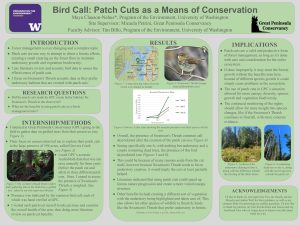Bird Talk: Patch Cuts as a Means of Conservations
Forest treatment is a constant and ever-changing practice, with varying conversations about the most ideal methods for different aspects of forest management. My research looks specifically at the creation of patch cuts and the consequences, both positive and negative, of them. I chose to look at the way Swainson’s Thrush reacted to the difference in their habitat. The aim of this study was to examine the relationship between Swainson’s Thrush and the understory creation in a patch cut. My internship itself aimed to collect data on previously girdled trees in Great Peninsula Conservancy preserves to ascertain if the trees were dying or not based on a set of factors observed from the tree. During my internship, I was provided data from AudioMoth that had been collected over the past three years that indicated the acoustic presence of different birds in the patch cuts. I use that information to see the change in presence from 2022-2024 of the Thrush. I found that there was more of a presence of Swainson’s Thrush in the patch cuts after the cut was created, versus before. However, I then wondered what the potential benefits and consequences of patch cuts were. These results are important because forest management will always be valued as long as forests are. This research provides a voice in a conversation that varies in strategies based on the different forest goals.
